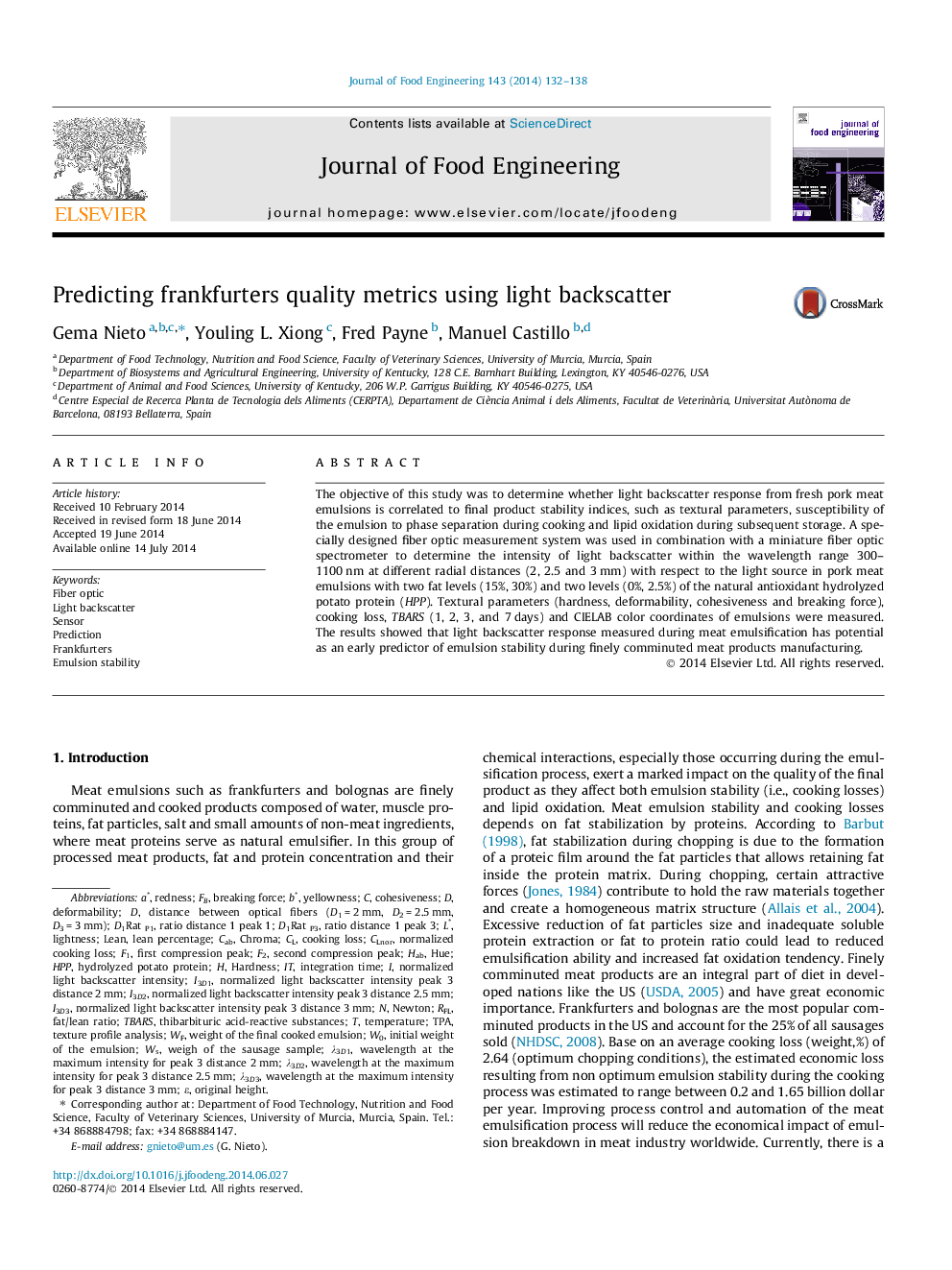| Article ID | Journal | Published Year | Pages | File Type |
|---|---|---|---|---|
| 223043 | Journal of Food Engineering | 2014 | 7 Pages |
•We designed a fiber optic measurement system in combination with a miniature fiber optic spectrometer.•We examine whether light backscatter from meat emulsions is correlated to final stability indices.•Light backscatter has potential as an early predictor of meat emulsion stability during manufacturing.
The objective of this study was to determine whether light backscatter response from fresh pork meat emulsions is correlated to final product stability indices, such as textural parameters, susceptibility of the emulsion to phase separation during cooking and lipid oxidation during subsequent storage. A specially designed fiber optic measurement system was used in combination with a miniature fiber optic spectrometer to determine the intensity of light backscatter within the wavelength range 300–1100 nm at different radial distances (2, 2.5 and 3 mm) with respect to the light source in pork meat emulsions with two fat levels (15%, 30%) and two levels (0%, 2.5%) of the natural antioxidant hydrolyzed potato protein (HPP). Textural parameters (hardness, deformability, cohesiveness and breaking force), cooking loss, TBARS (1, 2, 3, and 7 days) and CIELAB color coordinates of emulsions were measured. The results showed that light backscatter response measured during meat emulsification has potential as an early predictor of emulsion stability during finely comminuted meat products manufacturing.
